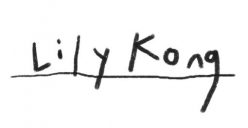31 May 2020
Reflecting on your coursework in the first half of Unit 2, answer some/most/all of the following questions: How has your original position changed as a result of your further work? Where have holes or gaps appeared in your research, and how do you expect to fill them in future work? What existing networks of knowledge do you have access to that could reinforce your practice? How do you want to use the summer break to keep momentum going in your project?
Reflecting on my coursework in the first half of Unit 2, my original position was to find the beneficial thing for my practice. This was fulfilled in my project. Initially, I intended to interrogate my practice, trying to find a difficult way out, so I can move forward from my comfort zone. The result leads to some new thoughts on my existing working methods. Towards the end of the project, I refined the way I work and rebuilt a sense of practice.
My research in terms of reading was slightly disconnected with my studio work. The direction was often off track. Throughout the project, I tried to identify and clarify the focus of the project. I was used to working with a purpose and the purpose comes at the early stage of a project. I did research on picture theory by W.J.T. Mitchell, investigated on relationships between text and image and explored illustration as a topic. Although I had been trying to connect writing and research with my studio work, they were still detached. Yet, this failed attempt leads to a realization that my position and focus come from making, iterating, reiterating and reflecting. I identified “subject matter” and “Medium” as something that were less investigated but “methods”. The presence of “working methods” is strong and prolonged among all iterations. I am aware that I am not creating guidelines or assistive materials but merely concluding insights I have gained from the process of making. Most of my insights came from the iterative process. It generates knowledge that even the creator, I was not aware of. They are beneficial to the way I work, bringing new thinking to my practice.
Now that I have finished my visual essay, I am curious about more methods. I am eager to find more methods from others that I don’t acquire. I often think making reflections on the work itself is very personal, almost secretive. I wonder how others figure it out “their way” or “their practice”. Intellectually, I had no idea what books to read or which theory to investigate. I haven’t read enough to be able to make a decision. First off I would read the suggested books from the reading list.
In the past few weeks, I explore illustration, image and text by tearing them down and exploring parts separately through iterative exercise. I wonder if I can do the same to a different topic. Graphic designer Ryan Carl has a similar approach in which he takes text out and explores its qualities in isolation. Of course, he makes work in graphic design discipline as a whole. It seems like a good exercise to apply to other disciplines, perhaps text?
In this summer, I plan to devote some time continuing the iterative exercise. I am eager to do something fully made of text, like the “alone” iterations in week 5. I am excited about the potentials of using text as an illustrative device.
——————————————————————————————————
Reference
W.J.T. Mitchell (2005) ‘What Do Pictures want?’ in What Do Pictures Want: The Lives and Loves of Images. Chicago: University of Chicago Press, pp.28–56.
R. Carl (2019) “Past-Present-Future”. Available at : https://www.instagram.com/p/B_Ky6aiBUA7/ (Accessed: 30 May 2020)
